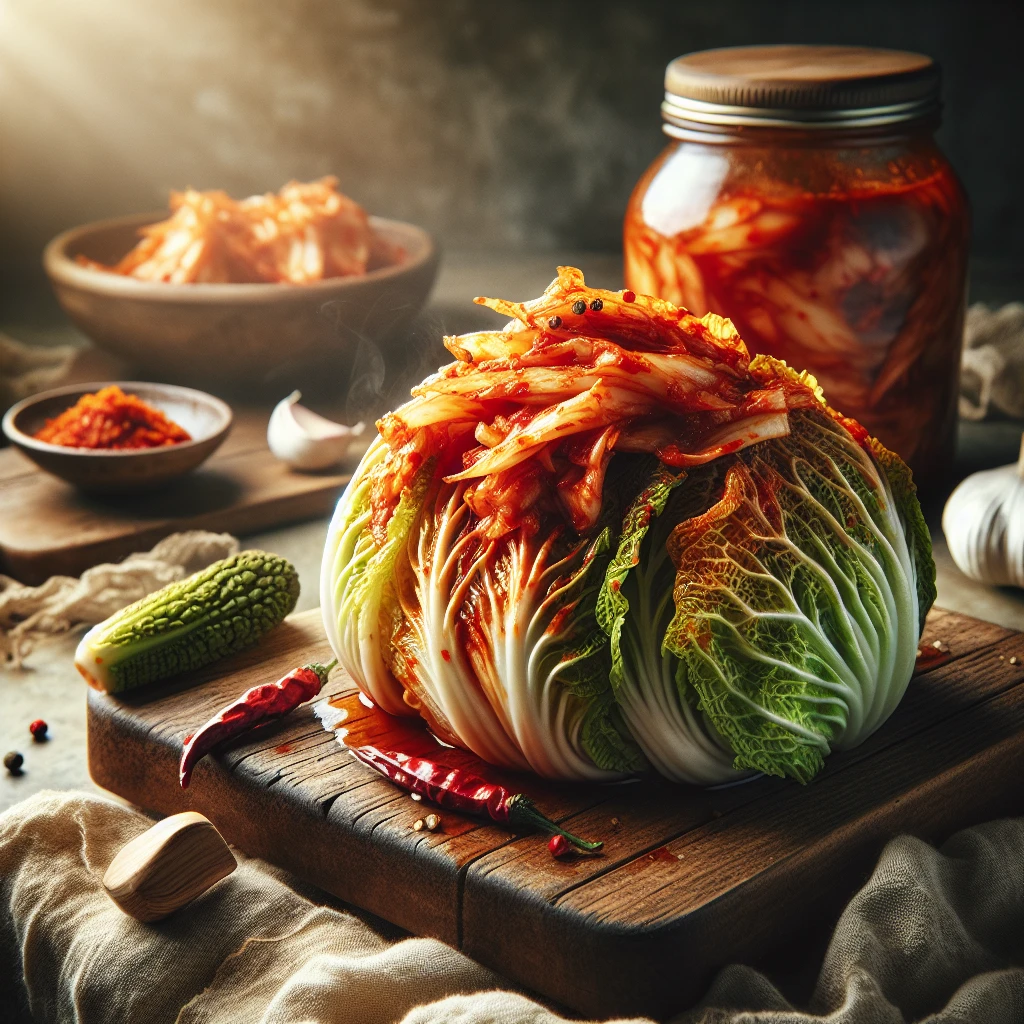
This traditional kimchi recipe brings the authentic taste of Korea right to your kitchen. It's a delightful dance of spicy, sour, and umami flavors that will elevate any meal.
Napa cabbage is the star of the show, providing a tender yet crunchy texture that’s perfect for fermentation. Salt draws out moisture from the cabbage, helping it to soften and absorb flavors. Water is used to dissolve the salt, creating a brine that sets the stage for fermentation.
Ginger and garlic introduce aromatic and spicy notes, key to kimchi’s signature taste. Sugar balances the heat and aids the fermentation process. Fish sauce adds depth and umami, a classic element in traditional kimchi.
Korean red pepper flakes (gochugaru) bring heat and vibrant color; adjust the amount based on your spice tolerance. Green onions add a fresh, sharp flavor, while daikon radish and carrot contribute a sweet crunch.
Kimchi is a versatile side dish that pairs beautifully with grilled meats, rice dishes, or added to soups for a spicy kick. Try it in a kimchi fried rice or as a topping for savory pancakes.
Start by quartering each head of napa cabbage and removing the cores. This makes it easier to handle and ensures even fermentation. Then, dissolve about half a cup of salt in four cups of water, and submerge the cabbage quarters. Let them soak for 1-2 hours to draw out excess moisture and soften the leaves.
Once soaked, rinse the cabbage thoroughly under cold water to remove excess salt. Drain them well; you don't want a watery kimchi. In a large mixing bowl, make your flavor base by combining ginger, garlic, sugar, fish sauce, and gochugaru. Mix until you have a thick, aromatic paste.
Add the chopped green onions, julienned daikon radish, and carrot to this spice mixture. Now, gently coat each leaf of the cabbage with this vibrant mix. Be generous but ensure every nook and cranny is covered.
Pack the coated cabbage tightly into a clean jar. Press down to eliminate air bubbles — this is crucial for the fermentation process. Seal the jar and leave it at room temperature for 1-5 days, depending on how sour you like your kimchi. Check daily and taste; once it reaches your preferred tang, move it to the fridge to slow fermentation.